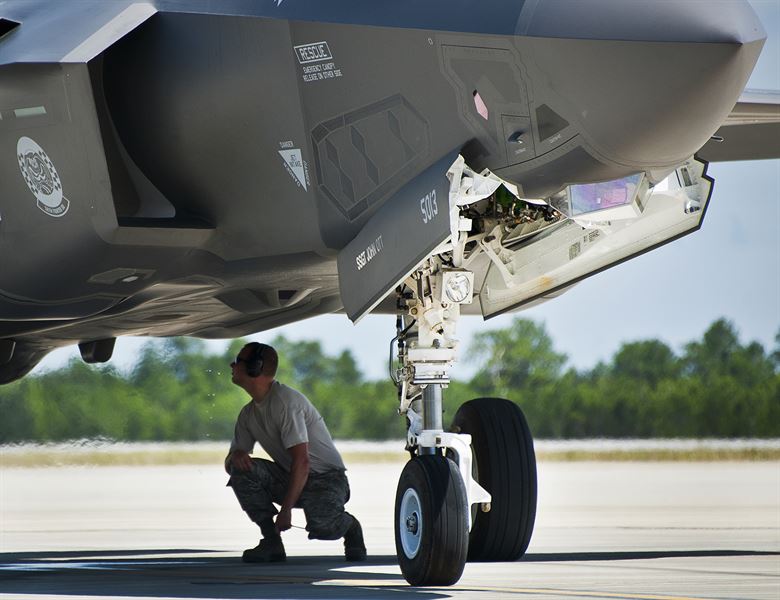A team of U.S. Marines 3D printed a part for the F-35 stealth fighter saving $70,000 in costs for a whole new landing gear door.
The component is a small part mounted on the door pressing it into the latch. It was designed and 3D printed by Marines from Combat Logistics Battalion 31 (CLB-31) in Carderock, Maryland.
Sam Pratt, a mechanical engineer at the Carderock’s Additive Manufacturing Project Office, provided further technical assistance to the team.
“You can’t buy the piece separate from the landing gear door which is a cost of $70,000. By having the capabilities to print in the field, we were able to replicate the part for a cost of roughly 9 cents.”

3D printed F-35 landing gear
Tasked to train CLB-31 Marines in design and application of 3D printed parts, Pratt was asked by the officers of CLB-31 to help the Marines make a grounded F-35 functional again.
By the time Pratt got to the lab, the Marines had already 3D printed the part, but were having sizing issues. The Marines had designed the part in Blender, a design software mostly used for game and movie special effects. According to Pratt, Blender is not ideal for accurate measurements or engineering work, so further modifications were needed before installation.
The replacement part was made with a hobbyist-oriented 3D printer and PETG filament for high strength and durability.

3D printing policy of the U.S. Army
Currently, in the U.S. Army, there are set guidelines and instructions to 3D print new parts of on-ground vehicles. Each new 3D printed part is approved by the Marine Systems Command (MSC).
However, 3D printing aircraft parts is a more a complicated task. As Pratt explains, “Aircrafts by nature are a lot more restrictive. There are airworthiness concerns, so when trying to print a part, you really have to know that the part is good so you don’t put your pilots and flight crews in danger.”
Regarding the use of 3D printing in the U.S Army, Pratt further explained: “We will see additive manufacturing used more often to make replacement parts […] there are already about 85-90 parts currently approved to print for ground vehicles, so it is as easy as going online, downloading the file and printing the part.”
3D printing aircraft parts
The U.S. Air Force has been using 3D printing as a cost and time efficient method to manufacture aircraft parts and prototypes. Since 2015, Tinker Air Base, Oklahoma has employed 3D printing to provide parts for airplanes and facilitate repair operations.
Most recent development includes the Air Force Research Laboratory (AFRL) and HRL Laboratories partnership to further the research into 3D printed ceramics for use in hypersonic flight vehicles.
Last month, United States’ Hill Air Force Base, Utah, announced that it will install a 3D printer to manufacture spare parts of F-35. It is hoped that the project will be cost and design efficient method to manufacture aircraft parts.
Subscribe to our 3D printing newsletter, to stay on top of news related to the aerospace industry, and follow us on Facebook and Twitter.
To make an exciting career in 3D printing, visit our 3D printing job site.
Featured image shows Lockheed Martin F-35 Lightning II. Photo via the U.S. Air Force


